FEBRUARY 2022
This month’s photo article is about photographing birds in the Turaco family, a family of large, brightly colored fruit eating birds, endemic to Africa. It includes mostly images from our recent Uganda photo tour.

One of the first birds we photographed when we arrived to Entebbe was the Great Blue Turaco. It’s very common in the Botanical Gardens there. Turacos are usually found in the middle of the canopy feeding on fruits so it’s often hard to get an image of them out in the open. Having photographed Knysna Turaco previously in South Africa I had noticed that it’s often possible to get a flight shot of them as they fly to and from the fruiting trees they are feeding on. Here we found a fruiting tree and waited for birds to fly back and forth. I stood farther away and used my 100-400 to get an image of this one in nice light. The techs for this shot were Canon R5, 100-400 at 400mm, adaptor, 1/3200 F8, iso 2000, Av mode, evaluative metering +1.0, handheld.

This is the type of setting you often find Turacos in. Tour participant, Diane Zumbach, photographed this beautiful Ross’s Turaco at the Entebbe Botanical Gardens. The techs for her shot were Canon R5, 800F11 lens, 1/800 at F11, iso 12,800, handheld. She used Dxo and Topaz Denoise software to reduce the noise and the image turned out beautifully. It’s amazing the isos you can shoot at with these newer mirrorless models then processed with the newest noise reduction software. The Entebbe Botanical Gardens are a great place to start and end a bird photo tour in Uganda as they are near the airport and local lodges. In fact, our hotel was just a short walk to the entrance to the Botanical Gardens and we photographed three species of Turacos there along with a lot of other great birds.
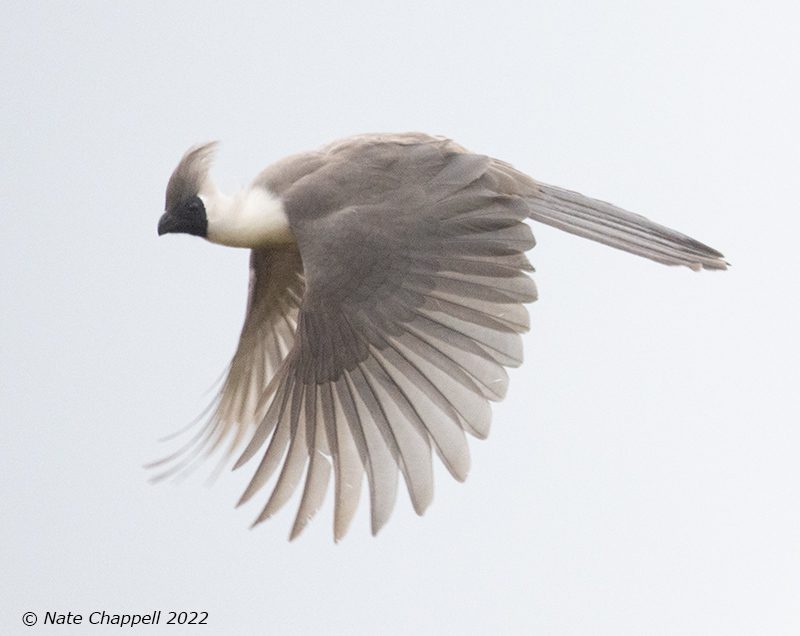
The next Turaco species we photographed was the Bare-faced Go Away Bird. I had previously photographed the Grey Go Away Bird (also called the Grey Lourie) which is a very common bird in Southern Africa. We were photographing from the safari vehicle and I managed to catch this one taking off. The sky was often kind of hazy and whitish leading to high key images like this one. The techs for this shot were Canon R5, 800F11, 1/2000 at F11, iso 2500, Av mode, evaluative metering at +1.0, handheld. We were at Lake Mburo National Park in Southern Uganda which is an excellent park for bird photography as many species which are more common in Tanzania have their northernmost range at Lake Mburo.
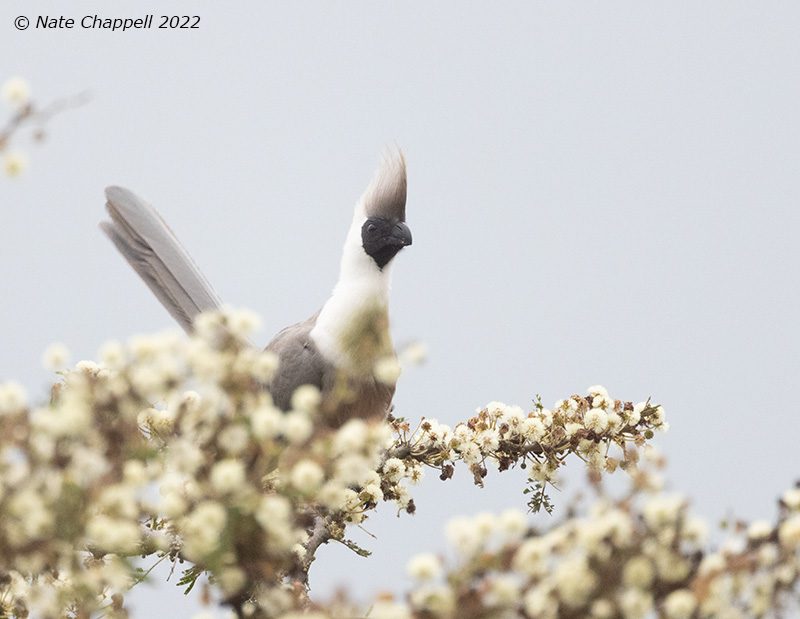
A little bit later we found a few more Bare-faced Go Away Birds feeding on a flowering acacia tree. Again when they are in the trees it’s difficult to get them completely in the open, but I thought the setting was nice with the flowering bushes here. At one point a Grey Hornbill flew in and landed in the same tree, I thought there was going to be an altercation between the two species but the hornbill soon flew off. I added a bit more positive compensation here to try and get some detail in the dark face of the bird. The techs for this shot were Canon R5, 800F11 1/1600 at F11, iso 3200, Av mode, evaluative metering +1.3, handheld from safari vehicle at Lake Mburo National Park, Uganda.

The Eastern Plantain-eater is the most common Turaco in Uganda and their noisy, raucous calls often greeted us. At Semliki Wildlife Reserve we spent some time photographing at a waterhole. These two birds put on quite a show when we played their calls doing a display dance, mating and then taking off. For flight images to work well with the 800F11 the birds need to be not too close in order to fit them in the frame and it’s helpful to photograph them when they are taking off as then you already have the focus locked on to them. Having to shoot at a minimum of F11 does help to get both birds in focus in a situation like this. The techs on this shot were Canon R5, 800F11, 1/1600 at F11, Av mode, evaluative metering at +1.3, handheld.
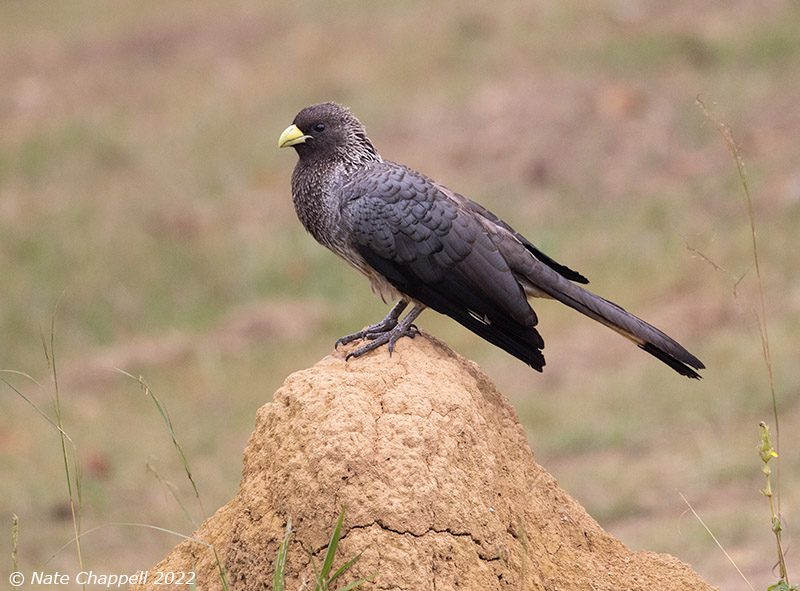
Here is an Eastern Plantain-eater that we found down low at the Entebbe Botanical Gardens. It was nice of him to perch up on one of the termite mounds. The techs for this shot were Canon R5, 800F11 1/640 at F11, iso 2000, Av mode, evaluative metering +0.3, handheld. While I was taking this portrait, I dropped the iso and shutter speed down a bit as I was going for good detail as opposed to action like in most of the previous images. Since I was shooting down and not photographing against the bright sky, I didn’t need to add much light to the exposure here.

Here’s another shot of Great Blue Turacos from our last day at the Entebbe Botanical Gardens. It was nice to get a pair perched up like this. It was a cloudy day so I had to add even more light, two stops this time to get good details in the birds. But I did love the poses they made for us. The techs for this shot were Canon R5, 800F11, 1/2000 atF11, Av mode, evaluative metering +2.0, handheld.
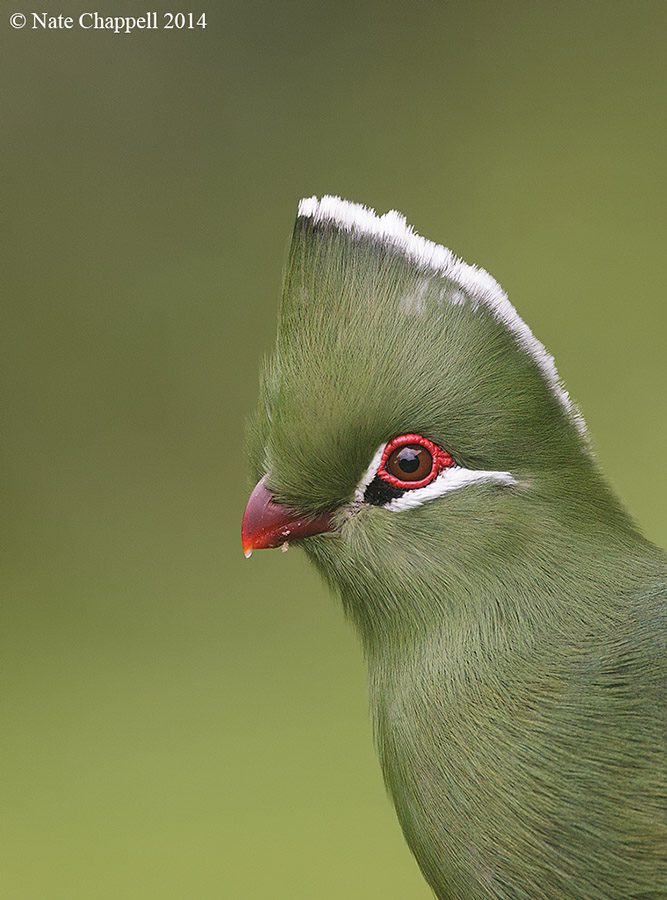
Here’s a Knysna Turaco from one of our previous South Africa Photo Tours. This was taken at a bed and breakfast in Wilderness, South Africa where this species used to come to their feeders every day. We had set up a perch on the lawn and this bird landed closer to us. This is cropped from horizontal to vertical. The settings for this shot were Canon 1DMkIV, 500F4, 1.4x, 1/250 at F7.1, iso 800, Av mode, evaluative metering at -0.3, handheld lying on the ground. Unfortunately, the owners of the bed and breakfast retired and sold the lodge and the new owners are not birders so this type of image is no longer possible in that area.
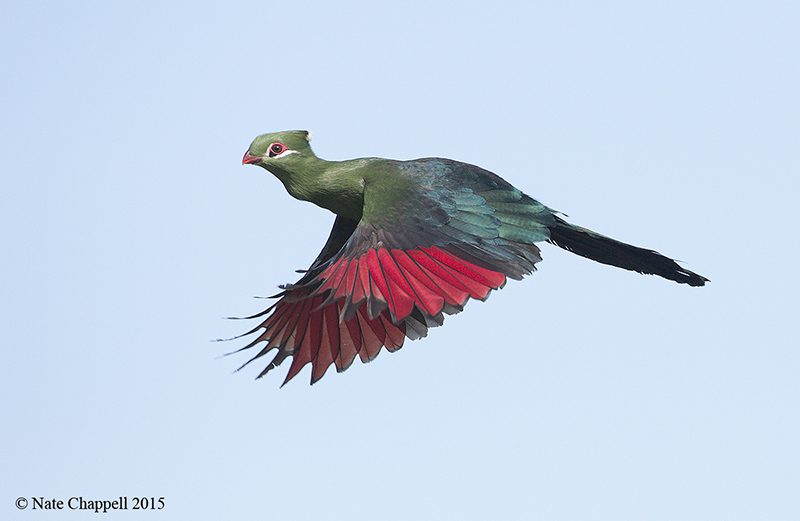
Here’s another shot of a Knysna Turaco from Wilderness, South Africa. This is the type of image which is still possible there as it was taken at a local park where the Turacos feed on fruiting trees and tend to fly back and forth along the entrance road there. The techs for this shot were Canon 5D3, 500F4, 1/3200 F7.1, iso 800, manual exposure, handheld.
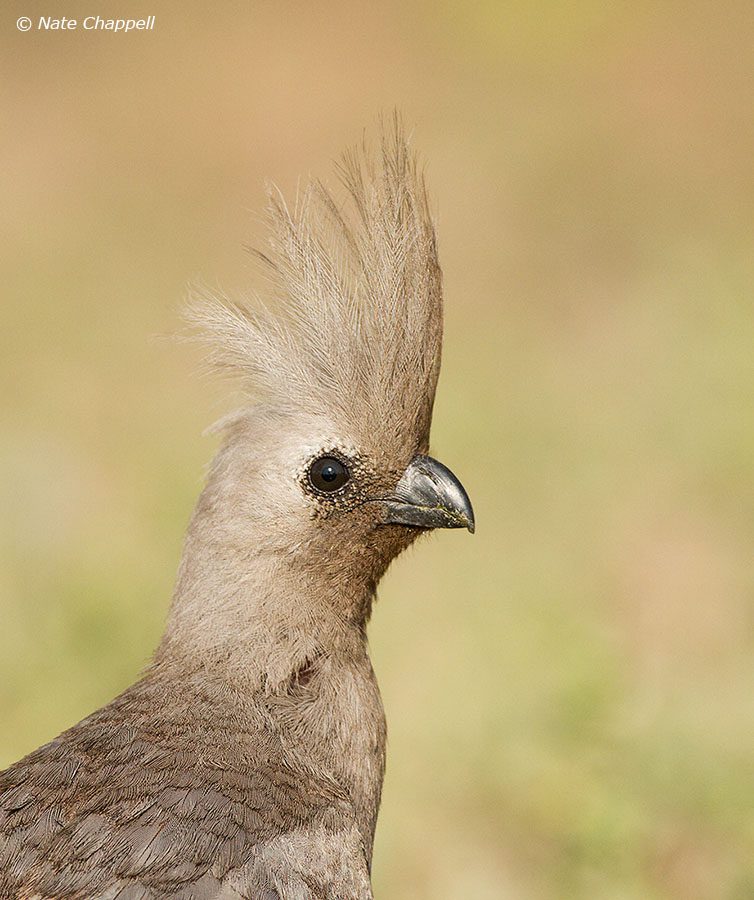
My first experience photographing Turacos was photographing the Grey Go-Away Bird in Namibia. This species is very common in Southern Africa, so much so that it is kind of overlooked after a while. But this portrait shows how beautiful they are. This species is also known as the Grey Lourie. The techs for this shot which was taken in Etosha National Park, Namibia were Canon 7D, 500F4, 1/1600 at F5.6, iso 400, evaluative metering at 0, handheld.
Due to their size, often bright colors and crowns Turacos are one of the most exciting families of birds to photograph in Africa. Uganda is a particularly good country for them as we photographed four species well on our trip but several other species are possible.
